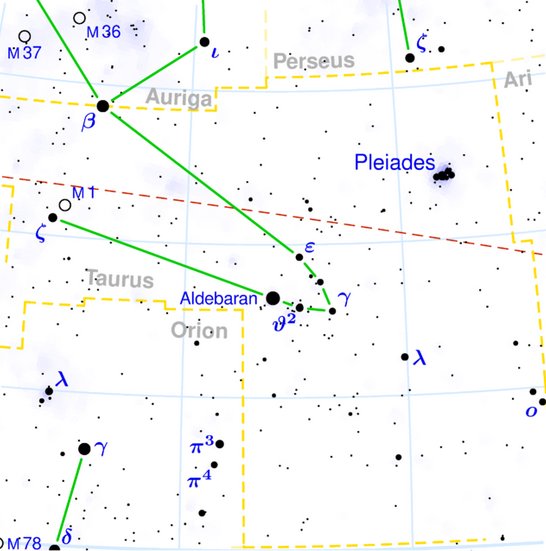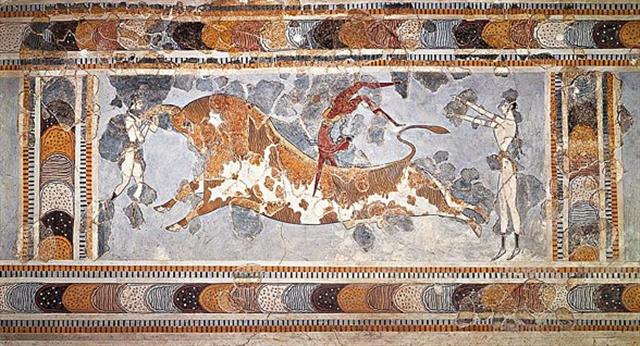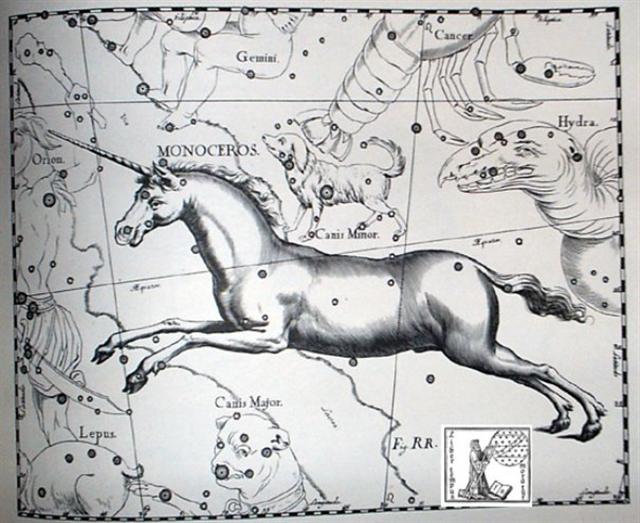The horns of the Stag grew out anew for each year but something similar cannot easily be found in the rongorongo texts. However, the name for the sea swallow, manu tara, was probably applied to the bird who brought new year to Easter Island - the bird at the corner.
A single pointed horn (tara) was the tool for a chicken to break out from his dark confinement, to emerge into the open:
The lack of suitable Stag mammals on Easter Island must have meant a search primarily among the birds. At the beginning of the G text was Taurus and this constellation was often regarded as only a pair of horns:
When the Eye of the Bull (Ain, ε Tauri) was at the Full Moon it was well known that the Sun was at the opposite side of the sky and close to Antares (Ana-mua, the Entrance Pillar - the star marking the entrance to the southern summer).  At the time when Bharani (the place of Birth, 41 Arietis) had risen heliacally at 0h - i.e. 41 right ascension days earlier than at the time of rongorongo - the Sun would have risen with Antares in "October 15 (288). Probably this had influenced the Pope Gregory XIII when he decided to launch his updated calendar in day 288 (= 2 * 144): ... The Julian calendar day Thursday, 4 October 1582 was followed by the first day of the Gregorian calendar, Friday, 15 October 1582 (the cycle of weekdays was not affected) ... In my preliminary glyph type dictionary there are several items which can be perceived as illustrating thorns (or corners, elbows etc) - for instance:
This is not surprising since there were several kinds of 'year': ... There are numerous Egyptian words for 'the year', and the same goes for other ancient languages. Thus we propose to understand eniautos as the particular cycle belonging to the respective character under discussion: the mere word eniautos ('in itself', en heauto; Plato's Cratylus 410D) does not say more that just this. It seems unjustifiable to render the word as 'the year' as is done regularly nowadays, for the simple reason that there is no such thing as the year; to begin with, there is the tropical year and sidereal year, neither of them being of the same length as the Sothic year. Actually, the methods of Maya, Chinese, and Indian time reckoning should teach us to take much greater care of the words we use. The Indians, for instance, reckoned with five different sorts of 'year', among which one of 378 days, for which A. Weber did not have any explanation. That number of days, however, represents the synodical revolution of Saturn. Nothing is gained by the violence with which the Ancient Egyptian astronomical system is forced into the presupposed primitive frame ...
|














